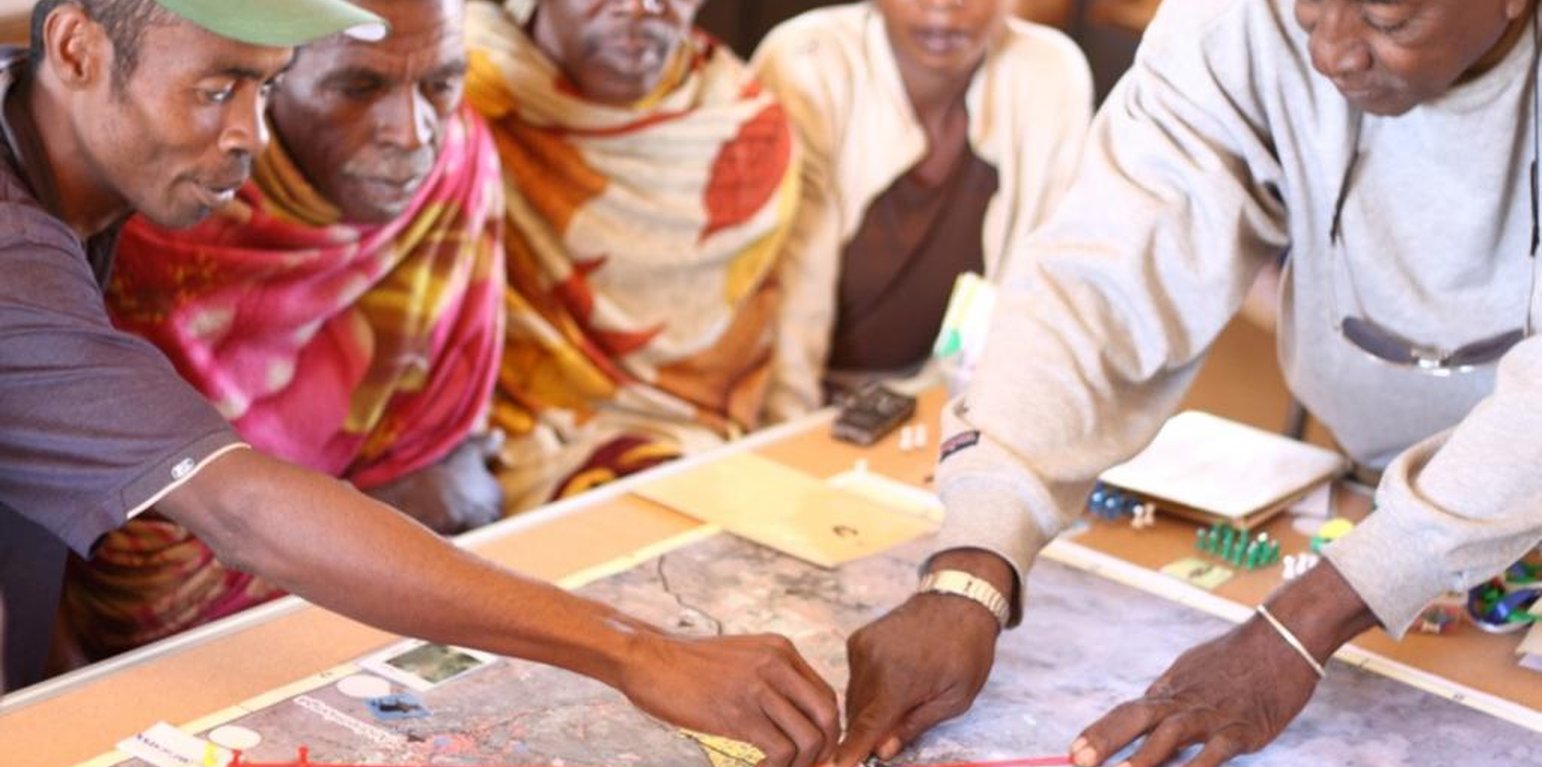



Aims / objectives: Two role-playing games were designed to understand land users' livelihoods strategies in both “normal” but also in times of drought events and cattle raids. The aim was to find out how, and why, livelihood decisions differed between household types in south-western Madagascar. Under the role-playing methodology, land users actively participate through discussing livelihood strategies, negotiating interests, and planning for the future. The methodology proved to be very dynamic, interactive and useful.
Methods: The SuLaMa project is a five-year Malagasy and German research project involving an interdisciplinary team (consortium) that aimed at developing sustainable land use techniques in south-western Madagascar. To validate soft-models that fed into computer-based models on land use change in the region, four workshops were held in four villages on the Mahafaly Plateau. Two groups of land users, with twelve participants each, worked simultaneously in each village: a total number of 96 participated. The games, ‘Livelihood Game’ and ‘Livestock Game', were designed to foster both scientific knowledge production on land use systems, and dialogue with land users. The essence of the methodology is that participants assume the roles of different household types and simulate their annual livelihood activities on a village map. The four household types differed from relatively wealthy (owning cattle; a lot of land) to poor (no cattle, little land). Each household type was represented by two or three participants and roles were allocated randomly.
Stages of implementation: The 'Livelihood Game' covers a time span of four fictive years. Each round represents the household’s annual subsistence decisions. In contrast, the 'Livestock Game' covers just one year with each round encompassing one of three seasons. In the 'Livelihood Game', players have a set of activity options: for example they can locate fields on the map and choose how to cultivate them. Moreover, additional activities like livestock keeping, charcoal making, paid work, collecting/hunting or educating children are available to them. The 'Livestock Game' concentrates on grazing and animal feeding decisions. Each decision is visualized by pictured cards, tokens and symbols - and grazing areas are mapped. While this participatory simulation remains a game, it would be feasible to integrate the methodology into a land use planning process.
Role of stakeholders: Initially, the joint interdisciplinary team conducted a baseline survey using Rapid Rural Appraisal tools to gain a general understanding of local socio-ecologic systems. Following this, a quantitative household survey was carried out in several villages (665 households in total) to analyse household composition and structures. Based on the results, researchers designed the structure of the role-playing games.
Other important information: A crucial precondition was that local communities were well-informed and participation was voluntary. This was achieved by an ‘announcement tour’ where timings were adapted to social, cultural and labour schedules of the local population. The communities were invited to determine the participants according to specific criteria. Participants had to be those who practiced the typical livelihood activities of agriculture and livestock keeping, and who contributed to household decision-making. Furthermore, a balance in terms of gender, age and lineage was requested.
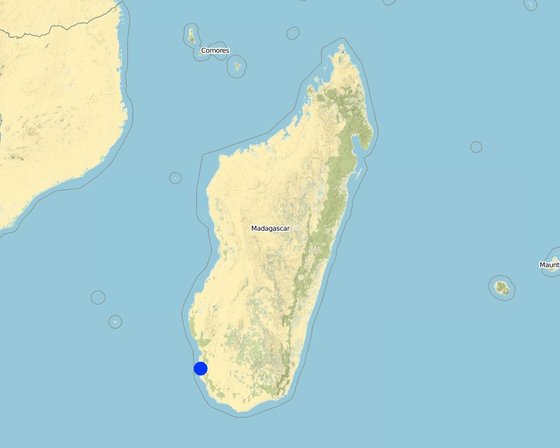
Байршил: Betioky-Atsimo, Mahafaly Plateau, South-Western Madagascar, Мадагаскар
Эхлэх огноо: 2014
Төгсөх жил: 2015
Арга барилын төрөл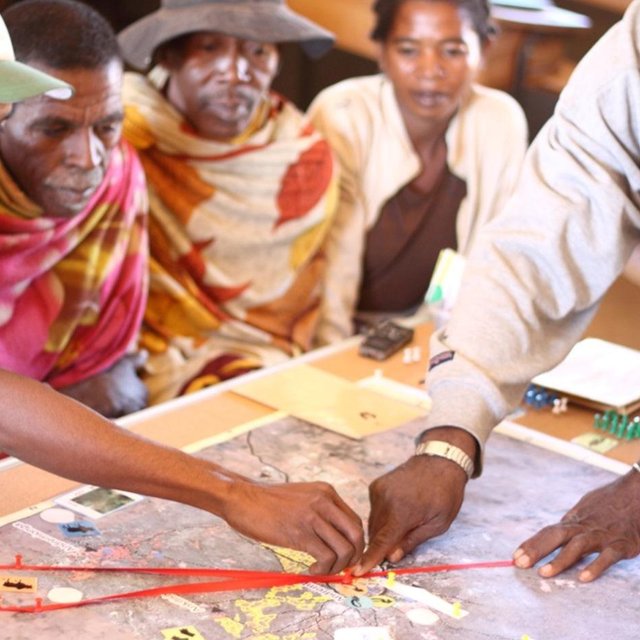
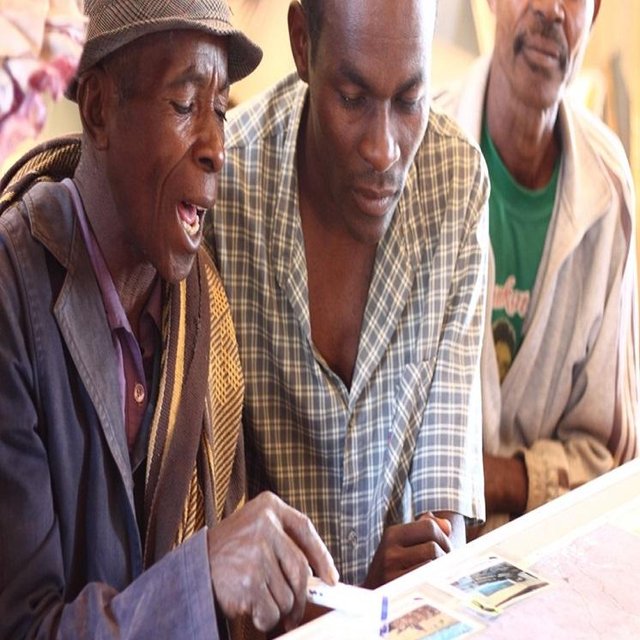
| Ямар оролцогч талууд / хэрэгжүүлэгч байгууллагууд арга барилд оролцож байсан бэ? | Оролцогч талуудыг тодорхойлно уу | Оролцогч талуудын үүргийг тайлбарлана уу |
| Орон нутгийн газар ашиглагч / орон нутгийн иргэд | land users from the villages | When selecting the participants, a balance in gender, age and lignage was asked. |
| Орон нутгийн захиргаа | traditional village authorities | |
| Засгийн газар (шийдвэр гаргагч, төлөвлөгч) | ||
| Олон улсын байгууллага | German-Malagasy research consortium |
The flow chart demonstrates the different sequences of the Livelihood Game at is was played in the workshops 2014. After an introduction, four years were simulated. Each year has a different purpose: The years one and two can be classified as 'normal' years, whereas year three and four are drought years. While year one serves to understand the game, the second year is to simulate accumulation and investment patterns. The third year consitutes a drought year which means harvest failure for the households. In the forth year, participants simulate their behaviour in the scenario of a persisting drought.
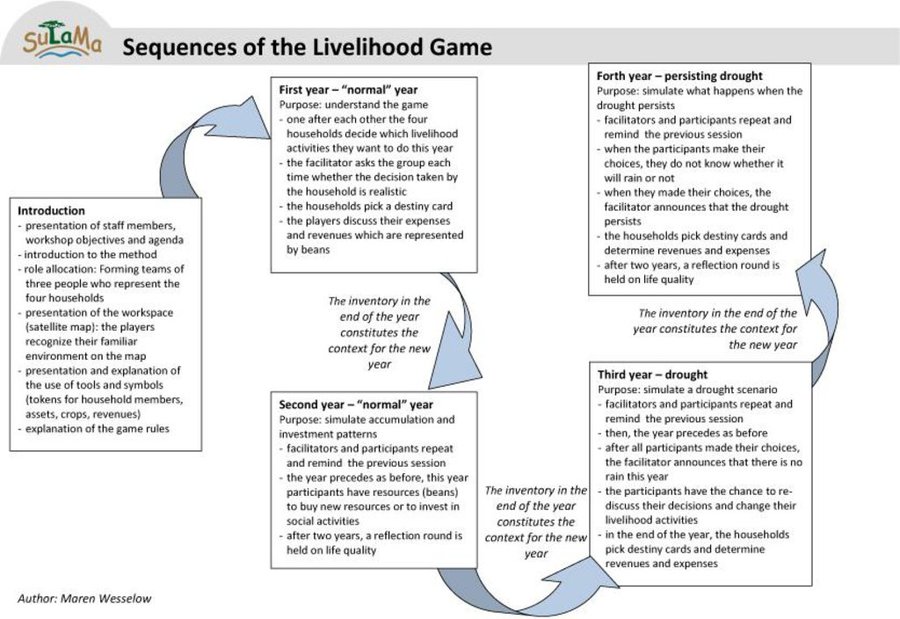
Шийдвэр гаргасан этгээд
Шийдвэр гаргах үндэслэл нь
Research assistants and WWF staff were trained to facilitate and document the method adequately.
During the workshop sessions, land users gained understanding of the interdependencies of land use and conservation practices and came to reflect the livelihood strategies in their villages.
An international research consortium conducted the Role Playing Game workshops to validate human decisions in their land use models. However, the approach can be applied for various purposes.
Research was carried out on station
maps, toolkits with pictured cards, tokens, etc.
Газар ашиглагчаас гаргасан хөдөлмөр хүчний зардал
Participants stated that they learned about each other’s livelihood strategies and the long-term impacts. One participant in Andremba stated (2014): “For us this game is like a lesson that makes us understand what happens in our lives. It is a reflection game that makes us think about our lives and our way of life with our subsistence activities and income sources.”
People of mixed age, gender and lineage participated in the simulations.
So far the approach has only be tested once by researchers. However, interested practice organizations may adopt and develop the method in the future.